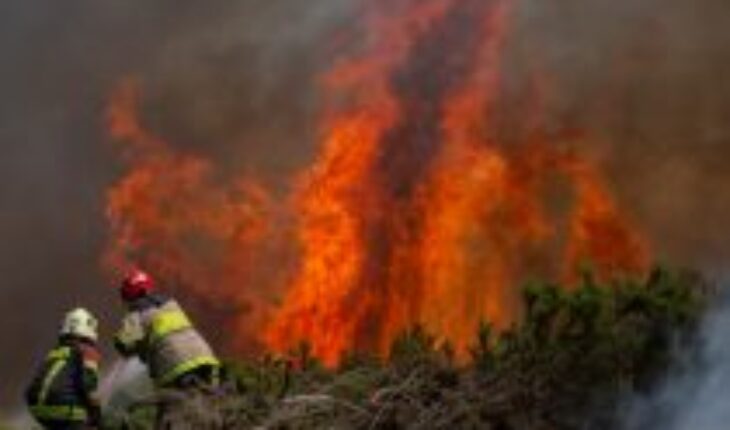Chile is a country whose vulnerable heritage to forest fires is close to 40 million hectares, considering the lands covered by native forest, by meadows and bushes, by forest plantations (monocultures) and those oriented to agriculture. Faced with this reality, Protection and prevention must be a central issue for the country, because it has social, political, economic and ecological implications of great significance.
Socially, the Chilean forestry sector provides more than one hundred and twenty thousand direct jobs throughout the territory. Economically, the sector represents an export volume of more than US $ 5,000 million annually (US $ 6,184.8 in 2022), contributing significantly to the national GDP.
Ecologically, the forestry sector boasts one of the highest rates of forest per capita, which, with its eighteen million hectares in parks and forest reserves, fourteen million hectares of native forest and more than two million hectares of plantations, constitutes such a plant heritage that it can capture significant amounts of CO2 from the atmosphere. thus contributing to mitigate the severe greenhouse effect and climate change affecting the world.
However, this wealth of heritage is concentrated in the Angelini, Matte and Masisa S.A. families, also implying serious obstacles and disruptions for SMEs and the communities where they are located, limiting the supply they may have as small wood industries.
This concentration has favored monocultures that are a factor that influences fires, becoming a problem for water tables. Its homogeneity of the landscape has encouraged the spread of fire. Moreover, historically it has impacted the livability of the rural sector.
Statistically, the average occurrence is 7,095 Fires in the five-year period 2018/2022 and the average area damaged reaches The 76,573 hectares Each season, which are distributed in: 42.21% of meadows and bushes, 14.4% of native forest, 29.6% of plantations and 13.79% of others. 0.8% of the occurrence is greater than 200 hectares, that is, it is catastrophic fires. The occurrence is concentrated in regions V, VII, VIII and IX.
From the point of view of the causes, 100% of forest fires result from an inadequate relationship between man and his environment, half of which is intentional; the rest is caused by negligence. Therefore, reducing the problem involves achieving a behavioral change in the population, so that it has a responsible attitude towards the protection of the environment.
The country spends 0.3% of GDP, Spain spends around 1% of its GDP on fire prevention
It should be noted that practically all of the Conaf brigade members are seasonal workers with a low salary and affected by the labor code, so it is necessary to study a special code for this work, where they risk their lives in each fire.
With regard to court cases for the crime of arson, only 17 per cent of fires are reported; 0.5% of them end in sentence, the rest are dismissed for different reasons, such as difficulties in determining the material author, due to the scarcity of resources to investigate and the high level of penalties, which inhibits their application.
Forest fires have destroyed hundreds of thousands of hectares, with direct economic losses of millions of dollars annual (timber, installations, livestock and other goods).
However the greatest losses are those of an indirect or intangible nature, which correspond to the environmental and social effects caused in the aftermath of fires, including in the long term, and which relate to ecological impacts; loss of wildlife, alteration of watercourses; loss of soil productivity; initiation of erosive processes; damage to scenic beauty; reduction of sources of work; pollution of the atmosphere with its consequent effects on public health and, in general, important limitations on the quality of life of people.
Based on this reality, it is urgent and a priority to protect forest resources from forest fires through actions such as prevention, a formative process of people and Define a public forestry institution, which should design and propose clear and adequately formulated national policies and strategies, such as investing in research and technological development in the protection of forest resources and a new forest model among the most urgent.
Since 1988 there has been a bill to transform the private CONAF into the FOREST SERVICE of Chile, which sleeps and the political class does not pronounce nor the Executive.
In these circumstances, it is a priority and urgent that both the Executive and the Parliament show that environmental problems must be solved with the strengthening of public forestry institutions (Undersecretary of Forests and Wildlife) and are at the height of the new times and legislate taking into account the labor and social security rights of CONAF workers and environmental sustainability.
Follow us on
The content expressed in this opinion column is the sole responsibility of its author, and does not necessarily reflect the editorial line or position of El Mostrador.





